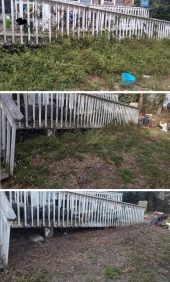So some interesting things I found when researching use of the Cynthia Moth for control:
They say almost exclusively Ailanthus, but...
http://tpittaway.tripod.com/silk/s_cyn.htm
Larvae have also been found on Forsythia, ashes (Fraxinus), common walnut (Juglans regia), golden rain (Laburnum anagyroides), sweet bay (Laurus nobilis), privets (Ligustrum), Magnolia, Prunus, castor-oil plant (Ricinus), elders (Sambucus), whitebeams (Sorbus), lilacs (Syringa) and many other deciduous trees and shrubs.
https://bugguide.net/node/view/328125
"Food: Many trees and shrubs, including ailanthus (tree of heaven, paradise tree), birch, ash, elm, alder, wild cherry, maple, lilac, willow, and apple"
I have labernum, lilac, sambucas, prunus and apple among my plantings.. so I'm on the fence about it now, though one of the sites above also says " females are very attached to the tree or thicket of saplings where they emerged. Most eggs will be laid within this location". It sounds likely to me that they pick other plants if the preferred host isn't around (no problem there, for now).
I plan to release tiny parasitic wasps to protect my apple and pear trees from codling moths so maybe it won't be the end of my apple trees. I guess they could attack any silkworm eggs laid on the apple trees too, but I don't know if their range is far to reach the pest tree (thereby reducing the effect of desired infestation), or if they'd basically just protect the trees where they hatch. Gotta research that.










